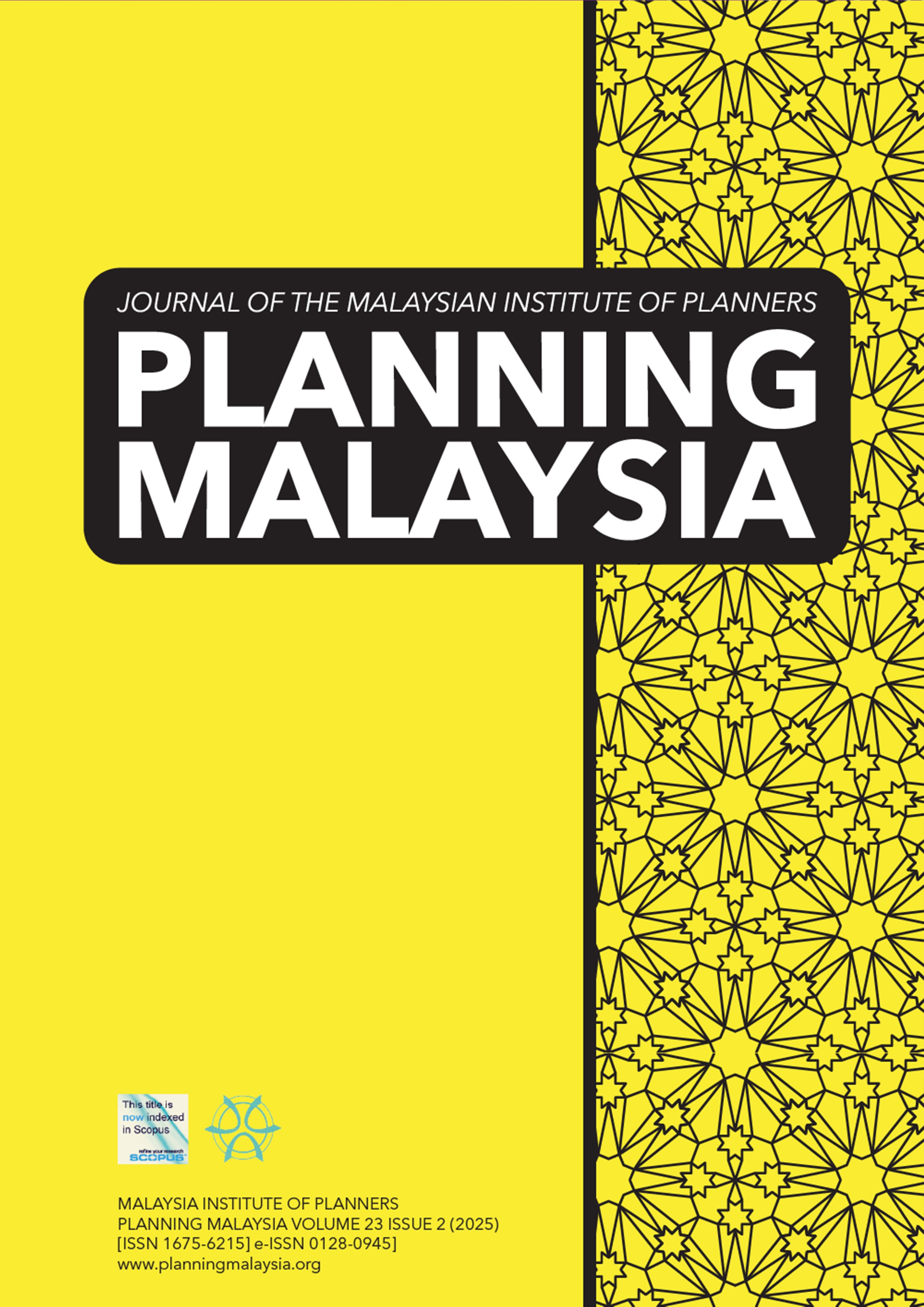SOCIOECONOMIC INFLUENCES AND PEDESTRIAN INFRASTRUCTURE IN PROMOTING ACTIVE TRAVEL TO SCHOOL AMONG PRIMARY SCHOOL CHILDREN
DOI:
https://doi.org/10.21837/pm.v23i36.1714Keywords:
Active Travel, Active School Travel, Physical Activity, WalkingAbstract
Walking is considered a physical activity, as it is well-established as a health-enhancing behaviour for children. Opting for active school travel like walking may help increase children’s physical activity levels. However, participation in active school travel remains low in many countries. The lack of physical activity among children is a significant global health issue that can lead to an increased risk of non-communicable diseases and poor mental health. A questionnaire survey was conducted among primary school children aged 7 to 12 to study this issue further and gather their perspectives on active school travel. This study investigates the relationship between socioeconomic factors, such as household income, parental education level, and car ownership, and children’s decision to engage in active travel to school. Furthermore, the study aims to assess the current state of pedestrian facilities and infrastructure near schools. In addition to the questionnaire survey, the researcher conducted on-site observations to evaluate the availability and condition of pedestrian facilities and infrastructure. The observations also included assessing traffic conditions and potential safety hazards for children who use active transportation to get to school. It is important to note that simply improving pedestrian facilities and infrastructure near schools may not be sufficient to change parental perceptions of traffic safety in the surrounding area.
Downloads
References
Bolkhanian, N., & Reyers, M. (n.d.). The walking school bus routing problem. 66–91.
Faulkner, G. E. J., Buliung, R. N., Flora, P. K., & Fusco, C. (2009). Active school transport, physical activity levels and body weight of children and youth: A systematic review. Preventive Medicine, 48(1), 3–8. https://doi.org/10.1016/j.ypmed.2008.10.017 DOI: https://doi.org/10.1016/j.ypmed.2008.10.017
Hatamzadeh, Y., Habibian, M., & Khodaii, A. (2017). Walking behaviour across genders in school trips, a case study of Rasht, Iran. Transportation Research Part D: Transport and Environment, 48, 1-10. DOI: https://doi.org/10.1016/j.jth.2016.08.011
Hawley, G., Witten, K., Hosking, J., Mackie, H., & Smith, M. (2019). The journey to learn: Perspectives on active school travel from exemplar schools in New Zealand. Journal of Transport and Health, 14(August), 100600. https://doi.org/10.1016/j.jth.2019.100600 DOI: https://doi.org/10.1016/j.jth.2019.100600
International Conference on Transportation and Development 2020. (2020). International Conference on Transportation and Development 2020 309 (Vol. 1990, Issue 2001, pp. 309–318). Retrieved from http://www.asce-ictd.org/
Larsen, K., Gilliland, J., Hess, P., Tucker, P., Irwin, J., & He, M. (2009). Active commuting to school: How far is too far? International Journal of Behavioral Nutrition and Physical Activity, 6(1), 1-9. DOI: https://doi.org/10.1186/1479-5868-5-1
Lu, Y., Sun, G., Gou, Z., Liu, Y., & Zhang, X. (2019). A dose-response effect between built environment characteristics and transport walking for youths. Journal of Transport and Health, 14(January). https://doi.org/10.1016/j.jth.2019.100616 DOI: https://doi.org/10.1016/j.jth.2019.100616
PLANMalaysia. (2017). Garis panduan pelaksanaan bandar sihat mesra pejalan kaki (Healthy Walkable City). Kementerian Kesejahteraan Bandar, Perumahan dan Kerajaan Tempatan. https://mytownnet.planmalaysia.gov.my/ver2/gp/GPP_WALKABLE_CITY.pdf
PLANMalaysia. (2022). Garis panduan perancangan kemudahan masyarakat. Kementerian Kesejahteraan Bandar Perumahan dan Kerajaan Tempatan. https://mytownnet.planmalaysia.gov.my/ver2/gp/GPP%20KEMUDAHAN%20MASYARAKAT%20(GP004-A.2022).pdf
Raoniar, R., Das, T., Banerjee, A., & M., A. K. (2019). The Parents’ Role in School Mode Choice for their Children: A Case Study in Guwahati. Journal of the Eastern Asia Society for Transportation Studies, 13, 775–794. https://doi.org/10.11175/easts.13.775
Rothman, L., Hagel, B., Howard, A., Cloutier, M. S., Macpherson, A., Aguirre, A. N., … Winters, M. (2021). Active school transportation and the built environment across Canadian cities: Findings from the child active transportation safety and the environment (CHASE) study. Preventive Medicine, 146, 106470. https://doi.org/10.1016/j.ypmed.2021.106470 DOI: https://doi.org/10.1016/j.ypmed.2021.106470
Tewahade, S., Li, K., Goldstein, R. B., Haynie, D., Iannotti, R. J., & Simons-Morton, B. (2019). Association between the built environment and active transportation among U.S. adolescents. Journal of Transport and Health, 15(August), 100629. https://doi.org/10.1016/j.jth.2019.100629 DOI: https://doi.org/10.1016/j.jth.2019.100629
Uddin, R., Mandic, S., & Khan, A. (2019). Active commuting to and from school among 106,605 adolescents in 27 Asia-Pacific countries. Journal of Transport and Health, 15(August), 100637. https://doi.org/10.1016/j.jth.2019.100637 DOI: https://doi.org/10.1016/j.jth.2019.100637
Downloads
Published
How to Cite
Issue
Section
License

This work is licensed under a Creative Commons Attribution-NonCommercial-NoDerivatives 3.0 Unported License.
Copyright & Creative Commons Licence
eISSN: 0128-0945 © Year. The Authors. Published for Malaysia Institute of Planners. This is an open-access article under the CC BY-NC-ND license.
The authors hold the copyright without restrictions and also retain publishing rights without restrictions.


